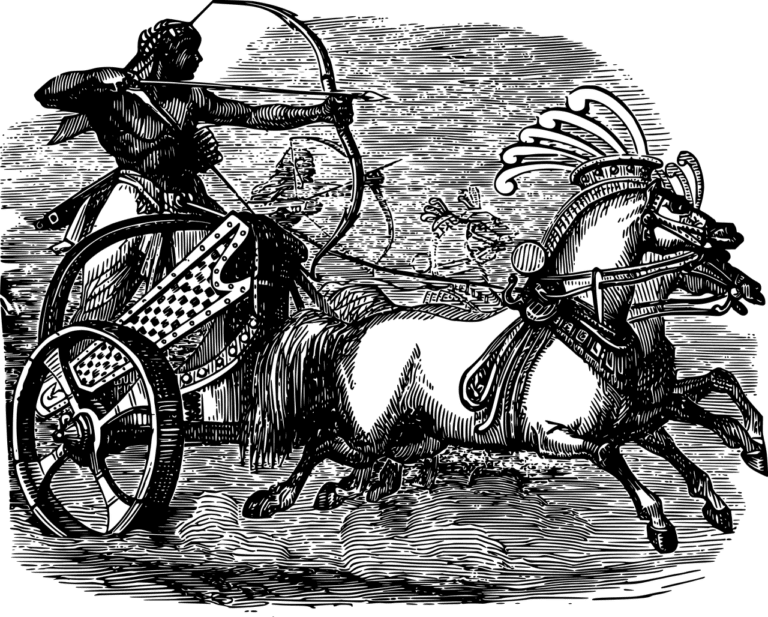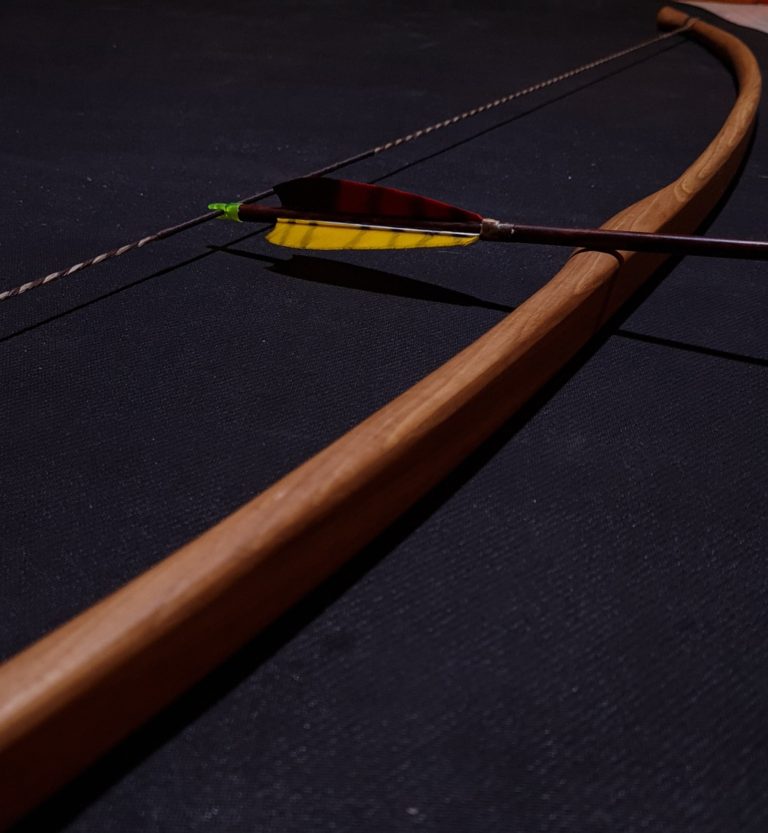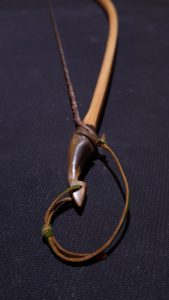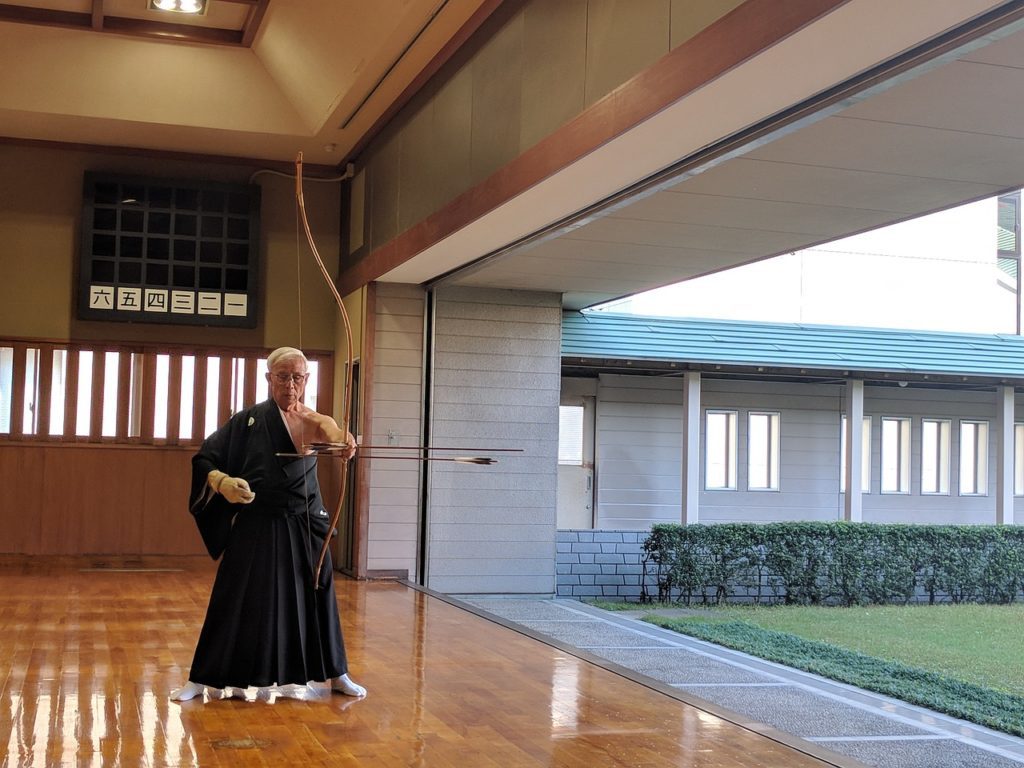A beginner's guide to historical longbows
The Earliest Longbows
The first bows were just sharpened sticks with strings attached to them. These early bows were likely used for hunting and defense by the first human civilizations. The oldest and best-preserved bows found in the world were discovered at a Stone Age settlement, at Holmegårds Mose in Zealand in New Zealand. They were found in 1944 during WW2 when there was a shortage of coal, and people started to dig up the peat bogs on the island for fuel. Five different types of these bows were found here, dating back 7500 years ago when people still used them as part of day-to-day life for hunting or fighting wars. They named these bows the Holmegard Bow. Here at KMC Archery we have replicated this bow and have students build it in our bow-building classes.
- 60000 BC. The earliest remains of rock points have been possibly used as arrowheads.
- 20000 BC. Cave paintings in the Iberian Mediterranean Basin, Spain, depicting hunting and battling archers.
- 8000 BC. Well-preserved bows from the Holmegaard swamp in Denmark.
- 3000 BC. Ancient Egyptians are proficient in archery.
- 2500 BC. The first composite recurve bows.
- 1000 BC. Archery was one of the Six Noble Arts under the Zhou dynasty of China.
- 500 BC. The first Japanese asymmetrical longbows.
- 450 AD. The Huns are at their peak under Atilla. They have devastated many Roman and Germanic armies with their renowned arrow showers.
- 1200 AD. The Mongol army under Genghis Khan primarily mounted archers.
- In 1350 AD Viking and English Longbows were created
- 1500 AD. The decline of archery begins with the advent of firearms.
The First Egyptian Bows
The first Egyptian bows, as elsewhere in the world, were horn bows, made from two curved animal horns, in this case, antelope horns, with a wooden section in the middle. By the beginning of Dynastic times, recurve bows made entirely of wood had replaced horns, though animal remains were still used for glue, and for the bowstring, which was made from sinew.
Plant material began to be used for bowstrings during the Old Kingdom, but sinew was still preferred, and the plant material was found to be more useful for the manufacture of arrows.


The First Composite Bows
Composite bows may have been invented first by the nomads of the Asiatic steppe, who may have based it on earlier Northern Asian laminated bows. Historians are unsure exactly if it was the nomads or the Egyptians. The immigrants brought with them new technologies, including the horse and chariot, the compound bow, and improved metal weapons into Egyptian culture.
Hyksos Composite Bow
The Hyksos bow brought horn and sinew back to Egyptian archery. It was a recurved bow, shortened and with a pre-existing tension in the wood. Horn, which could take compression, supported the side of the bow facing the archer, while sinew, which could stretch, was bonded to the wood on the side facing the enemy, the whole thing was then secured with bark. All of this meant that it had a lot more power and higher draw weight, in a bow only three to four feet long. The complexity also made the compound bow more difficult to produce and maintain. It needed protection from moisture as well as frequent re-stringing, and so Egypt preferred to import them from other areas than to actually manufacture them at home, though some were produced in Egypt. You can find a video here (https://www.youtube.com/watch?v=-acoeg-VwUI) to build one yourself.
Six noble Arts
The traditional Chinese culture associates archery with notions of wisdom and power. It was one among the Six Noble Arts that were practiced in ancient times, but it still carries great meaning today for people who live there as well; Confucius himself taught students how to use a bow properly so they could be successful warriors or else leaders without having any skill at all!
The Scythian bow
During the Eastern Zhou period, around 770–256 BC in ancient China there was a distinct style of bow known as “the Scythian” which had an asymmetrical shape and offered great potential for accuracy. The name originates from its appearance; it reminded people like manners or beauty did not catch their eye but instead caught on with how sleek these bows seemed when drawn back – almost appears graceful enough to be calling out across some vast plain where only you can hear them call out your name! This particular type ranged between different sizes depending upon whether soldiers were going into battle carrying heavy packs alongside themselves all day long.
The Hun Bow
The Huns were a group of nomadic people who lived on the Steppes. They had invented an extremely powerful bow that could kill from afar and this weapon became their prized possession because it allowed them to fight with greater efficiency than any other culture in Europe at that time period; however, when they traveled westward into Rome (the Eastern Roman Empire) things didn’t go well for these warriors-in fact many historians say without question ‘if not for Attila’ there would be no Western Roman Empire whatsoever! The Great Wall of China was also built to protect their Heartland from The Huns invading them on their horses.
The Mongols
The Mongolian bow is a 3,000-year-old technology that was used for hunting and war. It has been said to be the best weapon in history because it could shoot up 500 meters accurately with no problem on horseback or from ground level distances. The only thing better than this powerful armament are its users; Genghis Khan’s army consisted solely of talented archers who would not fight using swords but instead rely heavily upon their bows while attacking foes at long range. The 13th-century version came about when people discovered how effective they were against enemy shields during times where close quarters combat wasn’t possible


The Viking Bow or The Hedeby bow
Hedeby Bowyers created the earliest known bows from yew. The D-shaped profile and thin layer of sapwood on the back make them similar to modern-day archery equipment, though these early versions were much simpler in design than their later counterparts due largely because there wasn’t any inclusion of strings or sinews yet! It was used in the 9th to 13th centuries in northern Scandinavia, Germany, and Denmark. The Vikings would use these bows to shoot from their ships to oncoming enemies while doing raiding trips.
The English Longbow
Unlike most weapons in history, the English longbow is not only famous for its effectiveness against armor but also because it came into use so late. While swords and shields have always been important components of battle equipment since ancient times, these weapons became truly dominant during the Hundred Years’ War fought between England and France from 1346-1453. The type of wood available was indeed one of the main reasons for the type of bow produced…There were bows of elm – which tended to be flatter in cross section. and bows of yew, which were more rounded in section and strangely did not always incorporate the sap wood…Welsh bows were rough and ready, made of elm and designed for shooting at close range; powerful, but not able to make much distance…The Welsh employed guerilla and ambush tactics rather than long-range set battles. The English Longbow was probably a marriage between the Welsh bow and the Saxon yew bow which produced the English Longbow as we think of it.


The Japanese bow is one of the most interesting and complex weapons ever made. By understanding how it was constructed and evolved over time, we can get a better appreciation for the skill and dedication that goes into making these bows. The Japanese culture shows the earliest images of the distinct asymmetrical longbow from 500 BC to 300 AD during the Yayoi period. Chinese chronicle Weishu talked about it when he said “Japanese bows were short at the bottom but long top-wise” with time samurai took power in the 14th century which led them to require education in archery (kyudo), and the appearance of the first-ever style involving usage these weapons called Yumi or 実 because you have two different types: short ones used for close quarters combat while others were taller made primarily as ranged weapon firing over longer distances.
As a weapon of war, the Yumi started its decline after the Portuguese arrived in the year 1543. They brought a set of firearms with them in the form of a matchlock. The Japanese soon began creating their own version of the firearm which they called the Tanegashima. Eventually, this and the yari became the preferred weapons over the Yumi.


The Invention of Firearms
In 1500 AD, the decline of archery began with the advent of firearms. Although bows continued to be used for warfare and hunting, they became increasingly less popular as guns became more prevalent. Over time, this led to a decrease in the number of people who knew how to make and use bows, culminating in the near-extinction of traditional bowmaking techniques. However, there has been a recent resurgence in interest in archery, thanks largely to films like The Hunger Games and The Lord of the Rings trilogy. This has spurred a new generation of bowyers to revive old methods and create new ones, ensuring that the art of making bows will not be lost forever. Are you interested in learning how to make your own bow? Or perhaps you’ve already built one! Let us know in the comments below.
